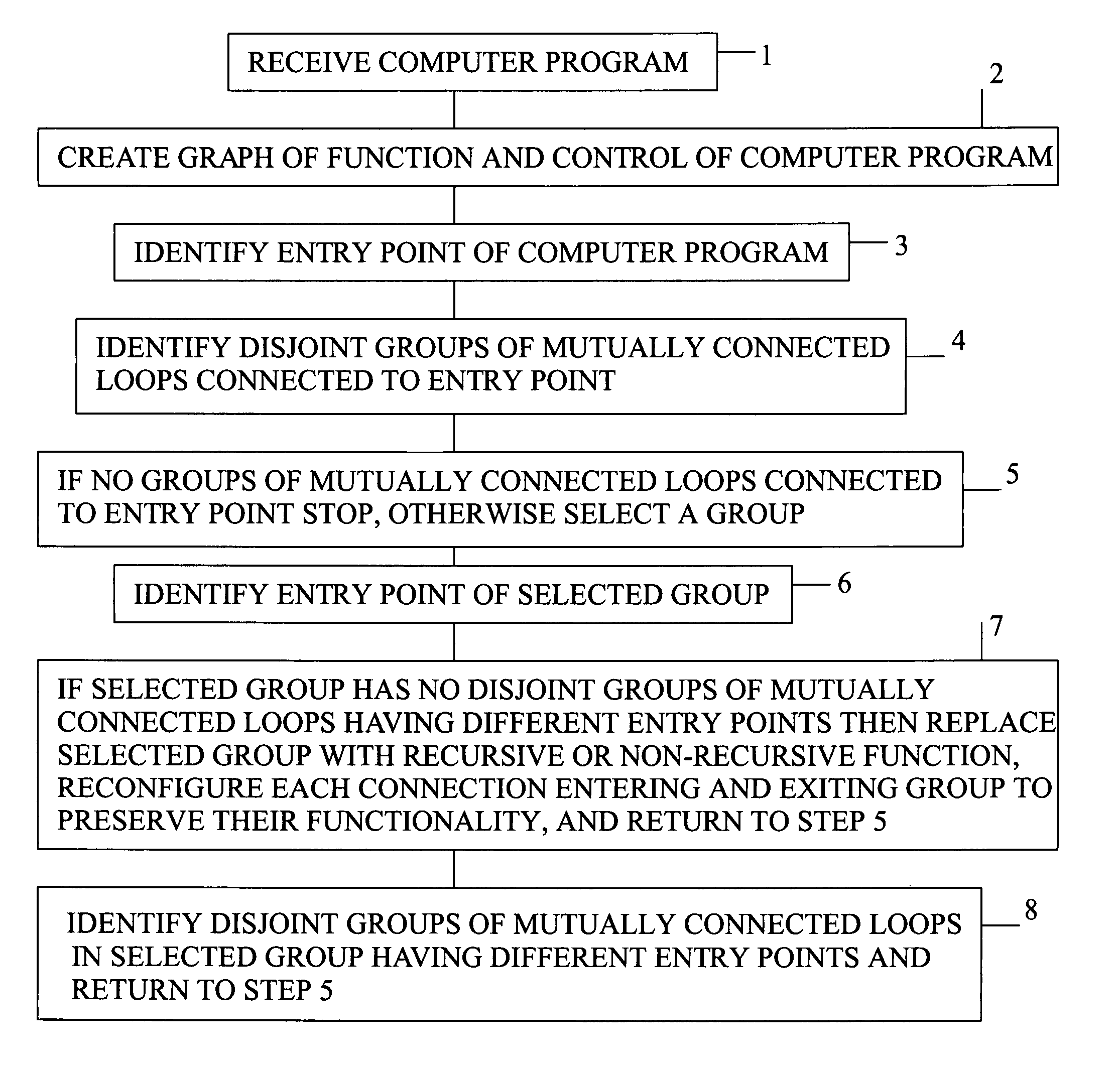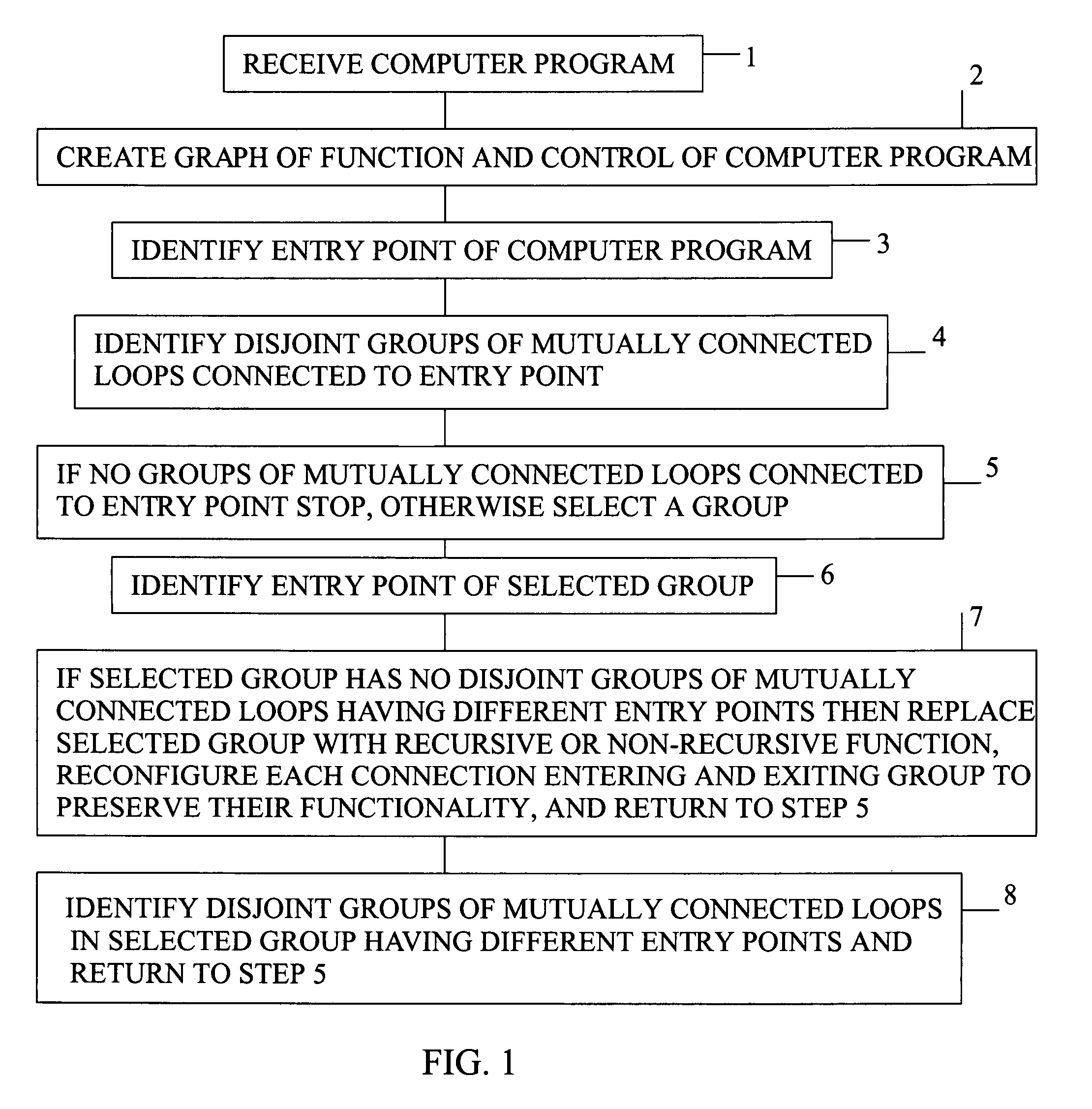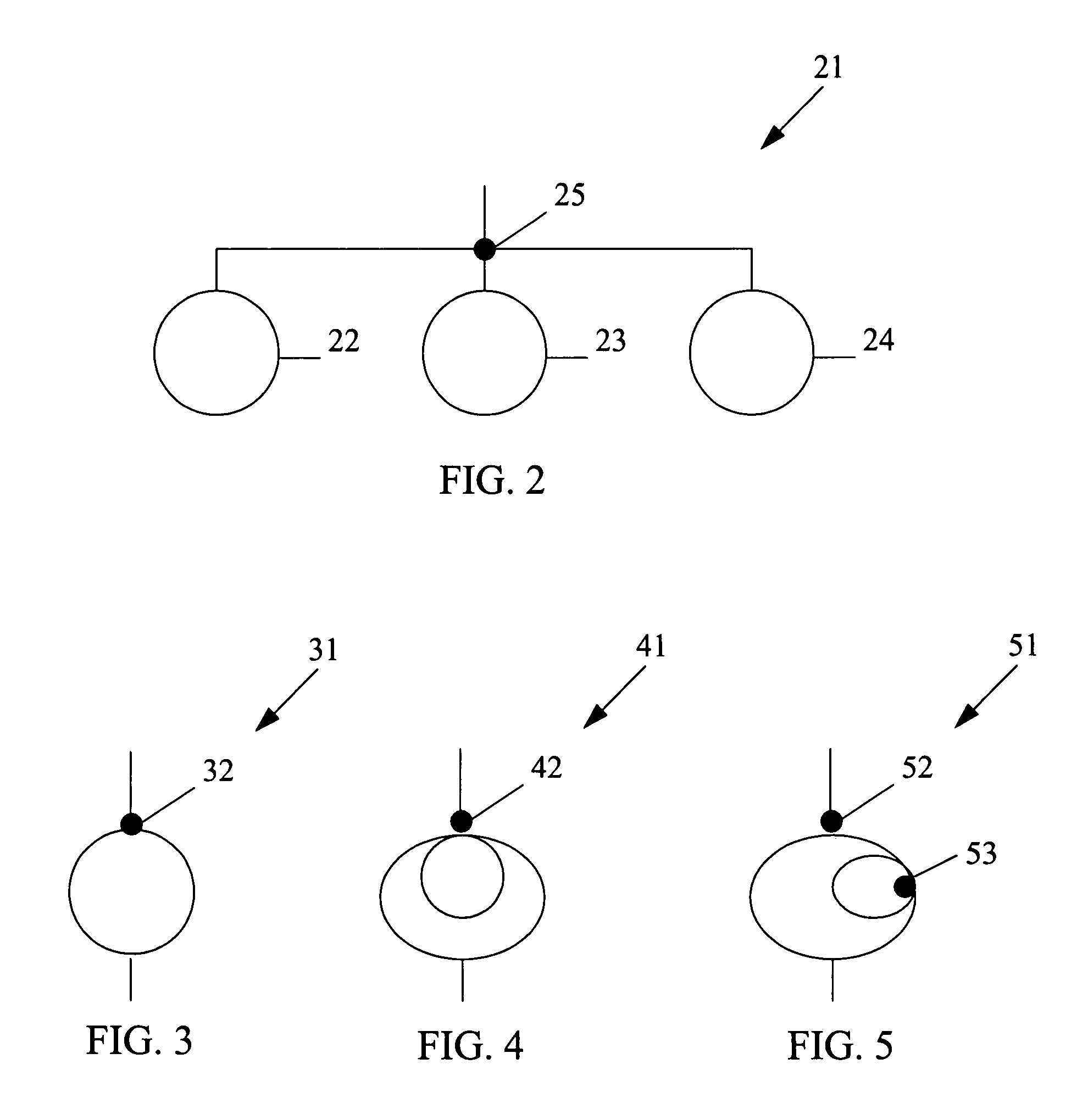Method of converting computer program with loops to one without loops
a computer program and loop technology, applied in the field of data processing, can solve the problem that the attempt by brute force to enumerate the paths through the computer program will most likely fail
- Summary
- Abstract
- Description
- Claims
- Application Information
AI Technical Summary
Benefits of technology
Problems solved by technology
Method used
Image
Examples
Embodiment Construction
[0026]The present invention is a method of converting a computer program with loops to one without loops.
[0027]The steps of the method are listed in FIG. 1.
[0028]The first step 1 of the method is receiving the computer program. In the preferred embodiment, the computer program received is source code in Java, a high-level programming language developed by Sun Microsystems. The state of a computer program written in Java is readily identified because Java targets a virtual computer or virtual machine. The Java virtual machine model contains an idealized stack to model program execution and an idealized heap to model data persistence. Instructions in a computer program alter the stack and heap. A description of each instruction as a state transition function is provided in a Java virtual machine. However, the present invention is applicable to any computer programming language.
[0029]The second step 2 of the method is creating a graph of the computer program's function and control. In ...
PUM
 Login to View More
Login to View More Abstract
Description
Claims
Application Information
 Login to View More
Login to View More - R&D
- Intellectual Property
- Life Sciences
- Materials
- Tech Scout
- Unparalleled Data Quality
- Higher Quality Content
- 60% Fewer Hallucinations
Browse by: Latest US Patents, China's latest patents, Technical Efficacy Thesaurus, Application Domain, Technology Topic, Popular Technical Reports.
© 2025 PatSnap. All rights reserved.Legal|Privacy policy|Modern Slavery Act Transparency Statement|Sitemap|About US| Contact US: help@patsnap.com



